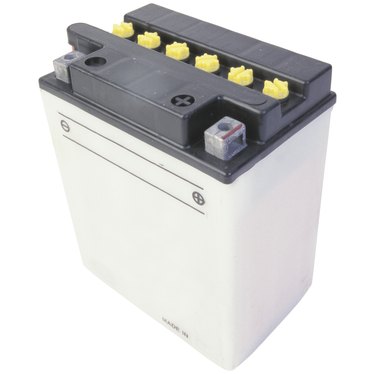
Under most conditions, static electricity of the type that shocks your fingers when you touch a doorknob cannot charge a battery. To have that happen, you need to convert the high-voltage and low-current static electricity into low-voltage, moderate-current electricity for a long period of time. This can be done, but should not be attempted by an amateur. Ham radio operators may have long wire antennas already mounted in the air to collect static electricity.
Step 1
Hang a long piece of insulated wire, preferably coaxial cable. The wire can be treated by heating it to approximately 100 degrees C. The heating of the wire will allow it to absorb more electrons. Hang between 400 and 1000 feet of wire.
Video of the Day
Step 2
Connect the bottom connector of the automotive coil to the positive side of the marine battery.
Step 3
Drive the grounding rod into the ground. Strip the ends of the small piece of insulated wire and connect the negative terminal of the battery to the ground rod.
Step 4
Connect the spark plug to the bottom of the long wire hanging in the air. Hang the "sparking" end of the plug about 2 mm above the ignition coil.
Step 5
Attach the second shorter wire to the ground rod, then to the capacitor, then back to the long, suspended wire just above the spark plug.
Video of the Day